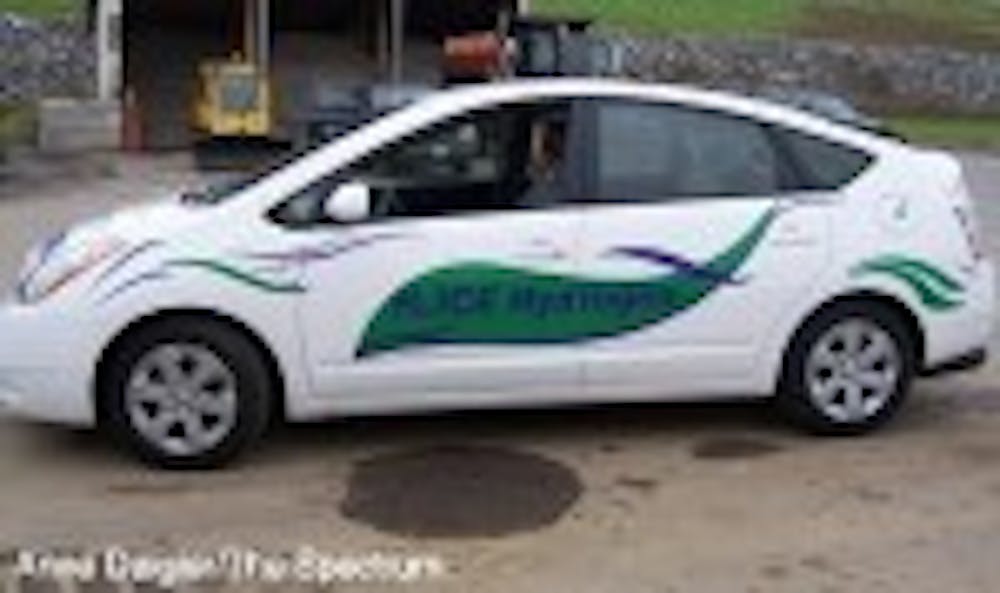UB's fleet maintenance crew is beginning what might be the longest test drive ever.
The New York State Energy Research and Development Authority have loaned two hydrogen-powered cars -Toyota Priuses - to the crew's compliment for two years. While on campus, the cars will be monitored for their efficiency in the field.
UB is the first university in the eastern United States to partake in this program, but other schools in California and other western states have already been testing the cars. Creators realized that the cars would need to be tested in a less auto-friendly climate.
The program came to the university as a result of the school's favorable reputation, as well as the unparalleled economic ease found in the Western New York area, where hydrogen is produced at half the cost of any other region in the United States.
"The reason they chose UB is that they consider Western New York to be the Saudi Arabia of hydrogen," said Bill McKibben, communication consultant to American Wind Power in New York City, a company involved in organizing the deal bringing the cars to the University. "The availability of electric power to create hydrogen by electrolysis is the reason that you can buy hydrogen in Western New York for less than half than you can buy it anywhere else in the US."
Aside from the economic means, Buffalo is also a hot spot for research and testing centers. Because of UB's reputation for being "prolific in research," companies from around the nation often look to UB to help them in studying and examining their products.
Quantum Technologies in California took two normal Toyota Priuses, pulled apart their transmissions, fuel injectors and spark plugs and transformed them into hydrogen-powered cars.
No gasoline is necessary, but the cars do have a battery, because hybrid engines require electricity. UB research personnel will observe how the vehicles operate, suggesting improvements and studying how efficient the car may or may not be.
The hydrogen-powered Toyota Prius may look normal on the outside, but the interior is anything but. A power button turns the car on and off, another power button puts the car in park, and a tiny lever changes your "shift" from drive to reverse.
A screen standard to the Prius was adapted to the Hydrogen Prius. The display now shows how energy is being distributed throughout the battery and the rest of the car. When the brake is applied, energy actually goes back into the car, contributing to the life of the battery. Purple meter bars signal the level of available hydrogen.
Having enough hydrogen to fuel the car is one of two minor problems the staff has encountered. The other involved having excessive inside the spark plugs, which had to be replaced.
According to Karl Lindaman and Ken Martyna, motor equipment mechanics for facilities operations working on the vehicles, these slight delays were expected.
"That's the whole thing, we don't know what's going to happen and this is a test. They brought them here, and that was our first test, some cooler rainy conditions," Lindaman said. "It didn't fail, but it didn't pass either. But that's the whole idea, they want to see if these vehicles will work in different kinds of environments."
One surprising fact about the cars is that they lack any sort of transmission. After getting up to a speed of about 40 miles per hour, the engine produces a loud "sneezing" noise.
"The car does not have a transmission," Martyna said. "It runs on a variable speed drive and a belt."
Having a car that has no transmission, runs on hydrogen and features a camera mounted above the rear license plate may become a more trivial part of the automobile market sooner than expected.
Although the idea of a hydrogen car may conjure images of horrible disasters such as the Hindenberg blimp, safety concerns applied to hydrogen vehicles are misappropriated, McKibben said.
"In all of the crash tests they were unable to do anything except to get the hydrogen to just disappear," he said. "It never caught on fire."





